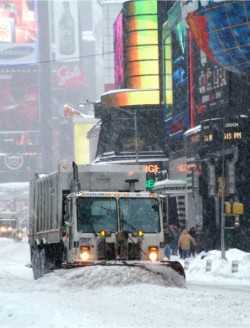About Winter Weather
When winter temperatures drop well below normal, or when winter storms hit, staying warm and safe can become a challenge.

Cold temperatures
Extreme cold is when temperatures drop well below normal for a region. When temperatures are much lower than normal, heat can leave your body more quickly. This can lead to a number of serious health effects, like hypothermia or frostbite. Learn how to protect yourself during cold temperatures.
Winter Storms
Winter storms can bring cold temperatures, power failures, loss of communication services, and icy roads. This can make being outside dangerous, so you should limit your time outside. Although staying indoors as much as possible can help reduce the risk of car crashes and falls on the ice, you may also face hazards inside your home. These could include:
- Cold temperatures due to a power failure or poor heating system.
- Fires or carbon monoxide poisoning caused by space heaters and fireplaces.
Stay Safe and Plan Ahead
Exposure to cold temperatures, whether indoors or outside, can cause serious or life-threatening health problems. Infants and older adults are particularly at risk, but anyone can be affected. To keep yourself and your family safe, you should know how to prepare your home and your car, how to prevent cold-related health problems like hypothermia and frostbite, and what to do if a cold-weather health emergency arises.
For more information about how to stay safe in cold weather, visit the Winter Weather FAQ
- Page last reviewed: December 13, 2016
- Page last updated: December 13, 2016
- Content source:


 ShareCompartir
ShareCompartir